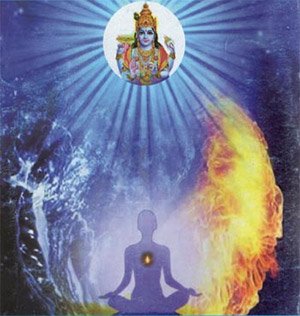Siddhanta Sangraha of Sri Sailacharya
by E. Sowmya Narayanan | 2008 | 30,562 words
This page is entitled “conclusion” contained in the Siddhanta Sangraha (English translation and critical edition). The Siddhanta Samgraha is a Sanskrit philosophical text dealing with Vishishtadvaita in five hundred Sanskrit verses. It was written by Shri Shailacarya (18th century) and closely follows the philosophy of Vedanta Deshika (13th century).
Conclusion
It could be noticed from the previous chapters that Śrī Śailācārya, the author of Siddhānta Saṅgraha expounded the Viśiṣṭādvaita Vedānta in a lucid style. Having gone through the entire text, the author’s extraordinary skill in delineating some of the features of the tattva, makes us to understand his profound greatness and scholarship. The whole work, is in anustubh metre, which can be easily learnt and understood by an individual desirous of learning the system of Śrī Rāmānuja. By the presentation of this critical edition the system of Viśiṣṭādvaita will get enriched. Some of the difficult concepts are explained along with the view of the Pūrvapakṣins in a nutshell. Śrī Śailācārya was a staunch admirer of śrī Vedānta Deśika that the system of Śrī Rāmānuja was laid down on a firm foundation, Śrī Deśika has analyzed, criticized the rival schools in his dialectical treatises. These texts required some commentary or other for a better understanding of the system. Further, some of the works were so terse that a beginner was all at see in understanding the system or tradition. In this light the work of Śrī Śailācārya assumes a great significance and helps one in understanding not only the works of Śrī Rāmānuja and others, but also the difficult texts of Śrī Deśika as well. This is evident from the fact that the author, Śrī śailācārya often refers Śrī Deśika’s work. In his attempt the author of the text, has definitely succeeded in presenting the basic tenets of Śrī Rāmānuja’s system. A close scrutiny of other works of this nature would reveal the higher standard of this work in explaining the facts. Similarly, the other works of the author too are of the same class.
This is perhaps the mission that was intended by Śrī Rāmānuja and following him by Śrī Vedānta Deśika.
sarvadeśa daśākāleṣu avyāhṛtaparākramā |
rāmānujāryadivyājñā vardhatāmabhivardhatām ||
Conclusion:
 This concludes Conclusion according to Vishishtadvaita philosophy explained by Shri Shailacarya. This book follows the model of Vedanta Deshika although the Vishishta Advaita school was originally expounded by Shri Ramanuja. Vishishta-Advaita is one of the various sub-schools of Vedanta which itself represents one of the six orthodox schools of Hindu Philosophy. They highlight the importance of the Upanishads, the Bhagavad Gita and the Brahma Sutras.
This concludes Conclusion according to Vishishtadvaita philosophy explained by Shri Shailacarya. This book follows the model of Vedanta Deshika although the Vishishta Advaita school was originally expounded by Shri Ramanuja. Vishishta-Advaita is one of the various sub-schools of Vedanta which itself represents one of the six orthodox schools of Hindu Philosophy. They highlight the importance of the Upanishads, the Bhagavad Gita and the Brahma Sutras.
